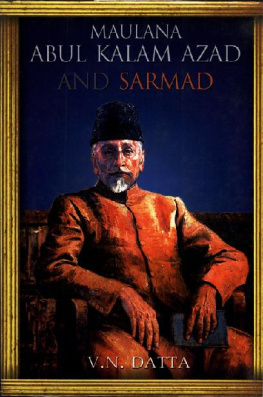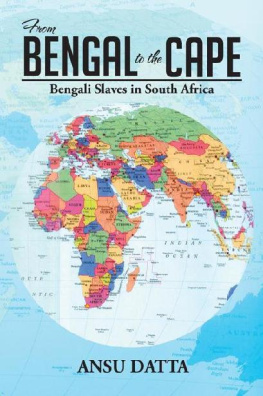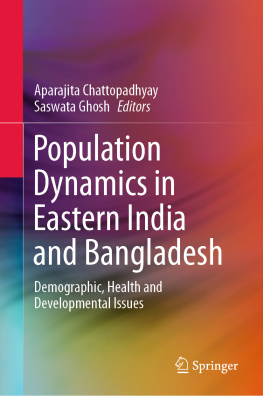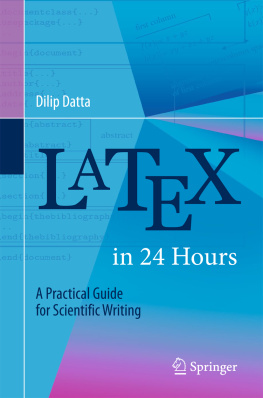Aparajita Datta - At the Feet of Living Things
Here you can read online Aparajita Datta - At the Feet of Living Things full text of the book (entire story) in english for free. Download pdf and epub, get meaning, cover and reviews about this ebook. year: 2022, publisher: HarperCollins India, genre: Home and family. Description of the work, (preface) as well as reviews are available. Best literature library LitArk.com created for fans of good reading and offers a wide selection of genres:
Romance novel
Science fiction
Adventure
Detective
Science
History
Home and family
Prose
Art
Politics
Computer
Non-fiction
Religion
Business
Children
Humor
Choose a favorite category and find really read worthwhile books. Enjoy immersion in the world of imagination, feel the emotions of the characters or learn something new for yourself, make an fascinating discovery.

- Book:At the Feet of Living Things
- Author:
- Publisher:HarperCollins India
- Genre:
- Year:2022
- Rating:5 / 5
- Favourites:Add to favourites
- Your mark:
- 100
- 1
- 2
- 3
- 4
- 5
At the Feet of Living Things: summary, description and annotation
We offer to read an annotation, description, summary or preface (depends on what the author of the book "At the Feet of Living Things" wrote himself). If you haven't found the necessary information about the book — write in the comments, we will try to find it.
At the Feet of Living Things — read online for free the complete book (whole text) full work
Below is the text of the book, divided by pages. System saving the place of the last page read, allows you to conveniently read the book "At the Feet of Living Things" online for free, without having to search again every time where you left off. Put a bookmark, and you can go to the page where you finished reading at any time.
Font size:
Interval:
Bookmark:


The true biologist deals with life, with teeming boisterous life, and learns something from it, learns that the first rule of life is living. The dry-balls cannot possibly learn a thing every starfish knows in the core of his soul and in the vesicles between his rays. He must, so know the starfish and the student biologist who sits at the feet of living things, proliferate in all directions.
John Steinbeck, The Log from the Sea of Cortez
TO
Dr Ravi Sankaran (19632009)
Friend, mentor, rambunctious spirit, who deeply inspired us with his passion for nature, empathy for people and commitment to conservation.
Contents
I T IS A PRIVILEGE TO write a foreword for a collection of essays by members of the Nature Conservation Foundation (NCF). Twenty-five years is but a blip in historical or, for that matter, ecological time. But it is a landmark in human lifetime. Equally so for an organization with a mission and a cause.
To work collectively for conservation and more generally for and with nature was cause for a small celebration. It was especially welcome in India a quarter of a century ago. Far-reaching economic reforms and socio-ecological and cultural shifts were remaking the landscape, generating new pressures on the environment even as growth picked up steam. To attempt to put science, mainly biology, and link it to conservation as a practice was a big leap if not a great one. Since then, the foundation has grown in numbers of scientists, staff and personnel. Individual members as well as the organization have won recognition in India and abroad.
For a quarter of a century, the collective has held together mainly due to its shared ethos, culture and structure that combine team effort with room for diversity at the level of programmes. Many key wildlife, ecology and conservation initiatives have been centered on charismatic individuals. After the Second World War, the UK (United Kingdom) saw Peter Scott set up the Severn Wildfowl Trust; Philip Wayres Wildlife Trust in Norfolk focused on Englands native fauna; and the author and naturalist Gerald Durrell had his special zoo for endangered species in Jersey in the Channel Islands. Each of these survived the demise of their founder but the vision and mission were clearly spelt out by the man who started it all. A second model has been of a group of influential individuals who banded together for a cause, as with the New York Zoological Society and the National Audubon Society in the US. India, in 1969, got its own chapter of what was then the World Wildlife Fund, whose global origins lay in the initiative of Peter Scott and many European royal families. The Bombay Natural History Society, founded in 1883, comprised British officials, Indian princes and businessmen. The Wildlife Preservation Society of India 1958 was founded by foresters who had a love for wildlife and advocated its protection in an era when shikar was a way of life.
Why does this brief potted history matter and now? The NCF is strikingly different from each and all of these. The relative youth of the founders and the absence of an all-male set were notable. Its founders were all in their twenties. From the start, it had a significant presence of young women biologists. Elsewhere, women like Rachel Carson or Wangari Maathai have played a key role in environmental consciousness as have others in pioneering animal behavioral studies. But there is little doubt that this is a collective that both drew on and took forward a significant widening of the circle of leadership and participation. Further, the small group between them spoke at least five Indian languages as they hailed from different states. Though the foundation was headquartered in Mysurus Gokulam Park, Karnataka, these pioneers had one unifying trait: all had a masters degree in wildlife science or ecology. Most had studied at the Wildlife Institute of India (WII), Dehradun, established in 1985, while one was from the ecology department of Pondicherry University.
V.B. Saharia, the first director of WII, had argued strongly for revisiting conservation in the Indian context to ask how it often adversely affected local livelihoods. He asked why the latter were so badly hit and if it had to be so. He was uncanny in ways he might not have imagined because this issue has been a major concern of many of the foundations efforts not merely assessing impact but also working for redress and material dignity of the local resource users without losing sight of conservation objectives.
Interestingly, the small organization set up by this group looked at one more possibility of working outside the main frame of government, the institutes and the existing larger non-government organizations. They branched off, or rather seeded themselves, in settings that were ecologically diverse and often spatially far apart. NCF programmes have a long-standing presence in tropical rainforests, coral reefs, cultivated arable plains and wetlands, scrub and deciduous forests, and high altitudes. This may not span all the ecological or biogeographic zones of India but the locations are diverse in culture, socio-economic texture and ecological milieu.
This volume of essays is a selection, the first of many, I would hope, of reflections and experiences in these settings. The core quest of the NCF is present in different ways in each essay but what the author or authors see as central shifts with each piece. There is a deep curiosity about the natural world and fascination with creatures great and small. It is notable as it is a rare collection with not a single direct essay on the national animal the tiger. Most work beyond the five per cent of India that is protected as parks and sanctuaries. There is more than one encounter with the snow leopard and the hornbill, the remarkable feathered giant of the treetops. Mega mammals such as the elephant and the dugong of the seagrass meadows find their raconteurs. There is the charm of counting and watching birds in jungles and backyards, ponds and rivers, roadside and forests, asking when they arrive and depart during the migration season. There is a salutary reminder of how animals, too, have individual personalities. It is true of an animal ubiquitous in south India, the bonnet macaque.
Such work has roots in old-style natural history where watching and recording the minutiae of behaviour or ecology and making it available to the non-specialist mattered. M. Krishnan, the naturalist who died in 1996, represented that tradition that is alive and thriving here in these pages. But it is clear that this is also the eye of trained modern biologists. The Nobel laureate Niko Tinbergen watching gulls on the Dutch coast may be unknown to a new generation of biologists. His work is inspiration for those who find commonplace nature as intriguing as the rare. It is also a reminder of how much science owes to meticulous and constant observation.
There is, however, a second important strand in these essays. In exploring the multiple interfaces of humans with other organisms, there is engagement with the human dilemmas of co-habitation. This makes for conservation with serious, continued and knowledge-based intervention with the human dimension. It is striking there is none of the approach known as fortress conservation, with emphasis on guards, exclusion and relocation of local peoples. There is a reason for this. The foundation has played a key role in broadening the vision and mission of conservation in a deeply unequal society where economic, societal and cultural changes exert new pressures not only on wildlife but also on many people living among or next to it. Securing natures diversity is a goal that many agree upon. Ask how best to accomplish this and the paths diverge. Debates and choices are along multiple fault lines: large reserves or small, state fiat or community protection, a centralized regime or de-centralized power, science or local knowledge. To these have been added the familiar triad of choices between government as prime mover, or community or market/corporate forces. It is a measure of the maturity of the NCF scientists, practitioners and members that, whatever their own personal preferences, they opted for a different course from hardened ideologues.
Font size:
Interval:
Bookmark:
Similar books «At the Feet of Living Things»
Look at similar books to At the Feet of Living Things. We have selected literature similar in name and meaning in the hope of providing readers with more options to find new, interesting, not yet read works.
Discussion, reviews of the book At the Feet of Living Things and just readers' own opinions. Leave your comments, write what you think about the work, its meaning or the main characters. Specify what exactly you liked and what you didn't like, and why you think so.











